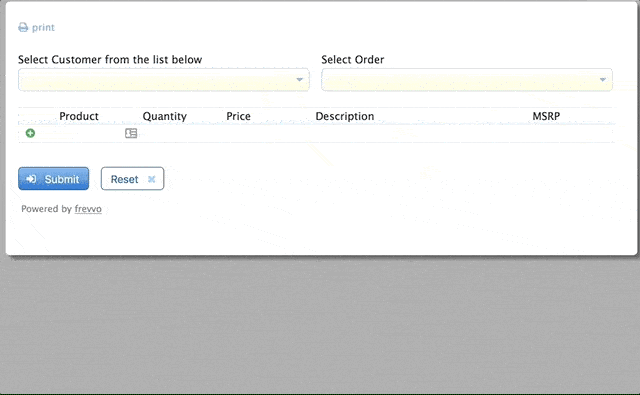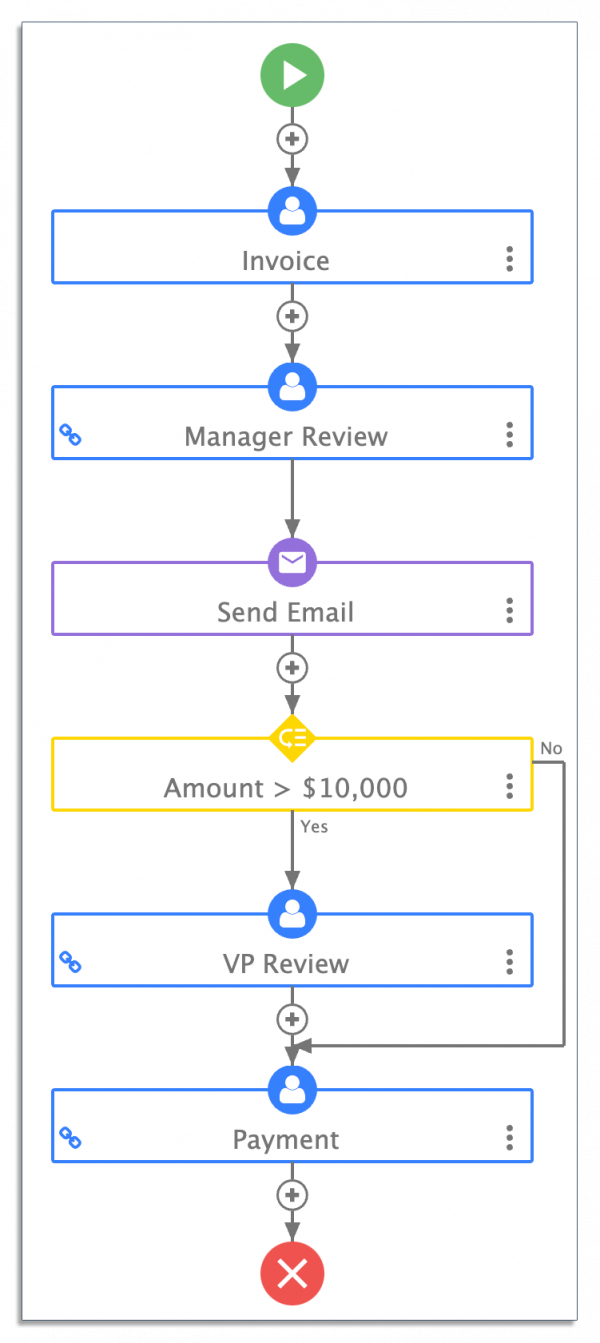The world continues to change at a rapid pace. Companies must continually adapt their processes to keep up with increased competition and meet changing industry regulations.
So how can you help your company grow and adapt? How can you equip your team with the tools they need to excel in their roles?
By improving your process productivity.
Read on to learn more. In this article, we’ll look at the different factors that impact productivity and how you can make your processes more efficient.
Click the links below to jump ahead:
- What Is Productivity, and How Do You Calculate It?
- Factors That Affect Productivity in the Workplace
- Step-by-Step Guide to Increasing Process Productivity
What Is Productivity, and How Do You Calculate It?
Productivity is the amount of “work” that a company produces over a given period of time. It measures inputs like raw materials against outputs like finished goods.

Improving productivity is key to a company’s bottom line. Increasing output with the same resources can help you generate more profits.
That’s not all.
Increasing productivity can help you:
- Reduce turnaround times for products or services
- Improve customer satisfaction
- Utilize your resources more efficiently
- Negotiate better terms with your vendors
- Improve employee engagement
- Lower operational costs
More productive processes also deliver a distinct advantage. Delivering goods faster than your competitors would make your company a more attractive option.
Let’s look at the types of productivity and ways to calculate them.
Prefer to see and hear it rather than read about it?
Let us show you how easy it is.
Labor Productivity
Labor or workplace productivity is the volume of output that an individual or company produces per labor hour.
You can calculate labor productivity with the following formula:
- Labor productivity = Total value of goods produced / Hours worked
Let’s say that an employee produced 25 units of a product in five hours. If each unit sells for $20, then the total value of the goods they produced is $500. Based on the formula above, this employee’s labor productivity is about $100 per hour ($500 / 5 hours).
Of course, there are different factors that affect productivity. But measuring labor productivity can help you track overall trends.
Process Cycle Efficiency
Another way to calculate productivity is to measure process efficiency — the amount of effort or time it takes to achieve a specific result, like processing an invoice or procuring goods.
You can calculate process cycle efficiency with the following formula:
- Process cycle efficiency = (Value-Added Time / Cycle Time) x 100
Value-added time is the time that you spend to improve the outcome of a process. It’s the work that you’re paying employees to do.
Cycle time is the total time that it takes to complete a process. It includes value-added time and non-value added time — waiting for approvals, searching for documents, etc.
Let’s use invoice processing as an example. If its value-added time is ten hours and its cycle time is five days (120 hours), then its PCE is about 8% based on the formula above.
Only 8% of the total time to process an invoice is spent on productive work. The rest is spent on things that aren’t important.
The following chart looks at PCE benchmarks on the low end and high end:

The process in our example definitely has room for improvement. By improving its efficiency, you can process invoices faster and take advantage of early payment discounts.
Factors That Affect Productivity in the Workplace
There are many factors that affect a company’s productivity — the economy, competition, supply chain, etc. But there are also certain elements that play a role in how productive employees are.
Let’s take a closer look.
Work Environment
An employee’s working environment includes its physical elements, such as lighting, sound, layouts, and even temperature. These all have a direct impact on productivity.
One study found that women performed better on math and verbal tasks when the temperature was higher, while men performed worse on similar tasks.
It’s not just the physical aspects of an office’s environment that affect productivity. It also includes the company’s culture. A positive culture is one of the most important factors of psychological safety — being able to speak up without being afraid of negative consequences.
Companies that foster more positive working environments are more innovative and agile. They provide an environment where employees feel supported and valued.
Processes
Employees spend approximately eight hours a week working inefficiently. This can happen when companies don’t have clearly defined processes in place.
If processes aren’t clear, employees won’t have any guidelines for the best way to handle certain tasks. They’ll attempt to figure things out on their own, which can lead to costly mistakes.
However, when you have clearly defined processes, employees won’t have to waste time figuring out what to do. They can simply execute each step from start to finish.
Technology
How companies deploy technology has a significant impact on productivity. The right tools enable employees to increase output without compromising on quality.
A good example is when Henry Ford installed the first assembly line for the Model T in 1913. This technological innovation reduced the time it took to build a car from 12 hours down to 1 hour and 33 minutes.

For modern workplaces, using tools like workflow automation software can help streamline your processes and improve productivity.
Training
New hires take at least six months to become proficient in their roles. However, they’ll spend approximately 28 hours per month working inefficiently because they’re still new.
If you can bring that number down, you can help new hires become more productive. Examples include investing more in training programs and creating documentation like standard operating procedures (SOPs).

When new hires and existing employees receive the right training, you can expect an increase in productivity.
Step-by-Step Guide to Increasing Process Productivity
There are countless ways to make a business more productive. But perhaps the best way is business process management (BPM) — the practice of continually improving processes within your organization.
More companies are reworking their processes. In fact, 70% of organizations are optimizing their processes to improve productivity. What’s more, 75% believe that BPM processes and technologies have helped their organizations accomplish their goals.
Follow these steps to increase process productivity.
1. Audit Your Existing Processes
Whether you’re onboarding a new hire, procuring goods, or paying an invoice, you generally follow a process to get things done.
However, these processes can become outdated over time. As a result, you could end up losing valuable time and resources on unproductive processes.
The first step to improving process productivity is to conduct an audit. This will give you a clear understanding of how a process works in its current state before you make any changes.
Ask yourself the following questions as you audit a process:
- Who are the people involved?
- Do they have everything they need to do their work?
- What are the exact steps from start to finish?
- Are there any redundant or unnecessary steps?
- Is your machinery and equipment in good condition?
- Does the technology you’re using fit your current needs?
Consider walking through a process yourself or observing it from start to finish. Additional input from those involved will also help give you a more complete picture.
Bottlenecks aren’t always obvious. Only by diving into a process can you fully understand how it works. Then you may start to notice steps that you can streamline or eliminate.
2. Establish Baselines and Set Goals
Before you make any changes to a process, it’s important that you establish baseline metrics first. This will enable you to measure the effectiveness of any changes you make to a process.
Take a process you want to improve and use the process cycle efficiency formula to measure its productivity. To quickly recap, here’s the formula:
- Process cycle efficiency = (Value-Added Time / Cycle Time) x 100
Once you establish a baseline, use the SMART methodology to set a goal for your process improvement efforts.

SMART stands for Specific, Measurable, Achievable, Realistic, and Timely.
3. Use Technology to Automate Your Processes
Once you’ve audited a process and established baseline data, you can begin implementing changes to improve its efficiency. But where do you even start?
With automation.
As much as 60% of all jobs can automate at least a third of activities. Automation is a powerful way to drastically improve productivity.
For example, is your team spending hours a week preparing forms and entering data into company systems? Using automation tools like frevvo can help you streamline these tasks.
With frevvo, you can:
Reduce manual data entry
Manually filling out forms like purchase orders is time-consuming and prone to errors. With frevvo, you can create dynamic forms and connect them to external databases to have the fields automatically populate.

The dynamic form builder is fully visual — there’s no need to code, as you can use the drag and drop builder to create your exact layout.
Plus, you can customize the forms to automatically validate submission data and ensure that users are entering the right data. It’s an effective way to prevent simple errors from holding up a process.
Automate approvals
Documents like contracts and expense claims generally require approvals from managers and senior executives before they can move on to the next step.
However, approvals can take weeks or even longer when each step is performed manually. With frevvo, you can create an automated document approval workflow for any process.
Here’s an example of an automated workflow for invoice approvals:

You can even use business rules to make your workflows more efficient.
In the example above, invoices are routed to a senior executive if their value is $10,000 or more. Invoices below that amount only require approval from a manager.
Of course, to ensure that documents don’t get “stuck” in processing, you can also configure your workflows to notify approvers that a document requires their signature.

You can also send periodic reminders to ensure that tasks are completed on time.
Integrate to third party systems
Work increasingly takes place across different applications. But inconsistencies with your data can occur if these systems aren’t integrated.
Consider the invoice approval process. Before approving an invoice for payment, you’d perform a three-way match to ensure an invoice has a corresponding purchase order.
This helps to prevent fraud, but it can also be incredibly time-consuming. Someone from the purchasing department would have to manually search for a PO in a database (or a file cabinet) and match each item on an invoice.
With frevvo, you can create a workflow that integrates with your accounting system and performs this matching automatically. It can even flag any discrepancies for further review.
These are just some of the many ways that you can use frevvo to improve your processes.
4. Implement New Changes to a Process
Start by making one change at a time. Making too many at once will make it harder to identify which ones positively impacted productivity and which ones didn’t.
Of course, make sure that you test any changes before rolling them out. For example, if you’re automating contract approvals, then test the routing and other aspects of your workflow before you deploy it.
You can test your workflows in frevvo and even see how they’ll look on mobile devices like tablets and smartphones.

Run through your workflow and make any changes as needed before rolling it out. But don’t pat yourself on the back just yet.
5. Provide Adequate Employee Training
No matter what changes you’re making to an existing process, make sure that you provide adequate training. This will help ensure a smooth transition.
If you’re using new technology like workflow automation software, schedule sessions to provide practical hands-on training and update your SOPs if you haven’t already.
Finally, schedule regular check-ins with your team and get their feedback.
6. Measure Your Results and Continue to Improve
It’s important that you measure and track your results. While this may sound obvious, consider that 20% of organizations don’t know if their process practices were improving efficiency.
Track key performance indicators (KPIs) like cycle times. If you see a reduction in cycle times, this tells you that your changes are likely having a positive impact on productivity.
With frevvo’s analytics dashboards, you can track key metrics across all your processes, so you can measure your efforts over time.

Finally, remember that your processes are always a work in progress. Continue to monitor your processes and revise them as needed.
Start Improving Your Processes Today
Every organization relies on processes to get things done.
However, your processes can become outdated over time if you don’t regularly revisit and revise them. This can have an adverse impact on productivity.
Automation software like frevvo can help you map and automate your processes. What’s more, the software features a fully visual interface. If you’re comfortable with software like Microsoft Excel, you can create your own automated workflows without writing any code.
Ready to improve your processes? Try a free 30-day trial of frevvo today to see how you can use workflow automation software to increase productivity.


